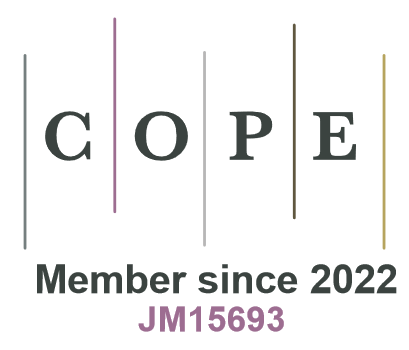Human ageing, longevity and evolution: can ageing be programmed?
DOI:
https://doi.org/10.2478/anre-2019-0032Keywords:
ageing, evolution, longevity, senescence, theories of ageingAbstract
Understanding the proximate and ultimate causes of ageing is one of the key challenges in current biology and medicine. These problems are so important that they are sometimes referred to as the Holy Grail of biology and the Great Conundrum in biogerontology. From an evolutionary perspective, ageing is due to a failure of selection that is caused either by declining strength of selection after the onset of sexual reproduction (Medawar’s theory and Charlesworth’s model) or pleiotropic constraints (Williams’ theory). According to the disposable soma theory, which was proposed by Kirkwood and Holliday, ageing is driven by the accumulation of damage during life and failures of defensive and repair mechanisms as the more an animal expends on sexual reproduction, the less it can expend on bodily maintenance, and vice versa. Although these standard models rule out the possibility that ageing is programmed, there is no consensus about the nature of ageing within the life history in current biogerontology. Interestingly, empirical studies show that there are molecular instructions for ageing and evolutionarily conserved mechanisms for ageing, which seems inconsistent with the idea that ageing is a matter of neglect or a consequence of a failure of selection due to pleiotropic constraints. Here, selected arguments for programmed (i.e. either determined and adaptive or prearranged but non-adaptive) and non-programmed ageing are discussed. Recent advances in biogerontology that cast new light on these problems are outlined here in the context of the idea that the pace of ageing can act as an adaptation in nature, even though ageing is non-programmed and non-adaptive.
Downloads
References
Arking R. 2019. Biology of longevity and aging. Pathways and prospects. 4th ed. New York: Oxford University Press.
View in Google Scholar
Atwood CS, Bowen RL. 2011. The reproductive-cell cycle theory of aging: an update. Exp Gerontol 46:100–7.
View in Google Scholar
Austad SN, Hoffman JM. 2018. Is antagonistic pleiotropy ubiquitous in aging biology? Evol Med Public Health 2018:287–94.
View in Google Scholar
Barbosa MC, Grosso RA, Fader CM. 2019. Hallmarks of aging: an autophagic perspective. Front Endocrinol 9:790.
View in Google Scholar
Barja G. 2014. The mitochondrial free radical theory of aging. Prog Mol Biol Transl Sci 127:1–27.
View in Google Scholar
Baudisch A. 2005. Hamilton’s indicators of the force of selection. Proc Natl Acad Sci 102:8263–8.
View in Google Scholar
Baudisch A, Vaupel JW. 2012. Evolution. Getting to the root of aging. Science 338:618–9.
View in Google Scholar
Bjorksten J, Tenhu H. 1990. The crosslinking theory of aging-added evidence. Exp Gerontol 25:91–5.
View in Google Scholar
Blagosklonny MV. 2010. Why the disposable soma theory cannot explain why women live longer and why we age. Aging 2:884–7
View in Google Scholar
Blagosklonny MV. 2012. Answering the ultimate question “What is the proximal cause of aging?”. Aging 4:861–77.
View in Google Scholar
Blagosklonny MV. 2013. Damage-induced aging and perpetual motion. Cell Cycle 12:2709–10.
View in Google Scholar
Blagosklonny MV. 2018. Disease or not, aging is easily treatable. Aging 10:3067–78.
View in Google Scholar
Bulterijs S, Hull RS, Björk VC, Roy AG. 2015. It is time to classify biological aging as a disease. Front Genet 6:205.
View in Google Scholar
Burger O, Missov TI. 2016. Evolutionary theory of ageing and the problem of correlated Gompertz parameters. J Theor Biol 408:34–41.
View in Google Scholar
Campisi J, Kapahi P, Lithgow GJ, Melov S, Newman JC, Verdin E. 2019. From discoveries in ageing research to therapeutics for healthy ageing. Nature 571:183–92.
View in Google Scholar
Charlesworth B. 2001. Patterns of age-specific means and genetic variances of mortality rates predicted by the mutation-accumulation theory of ageing. J Theor Biol 210:47–65.
View in Google Scholar
Chmielewski P. 2016. Teoria sezonowego programowania długowieczności. Kosmos 65:323–37.
View in Google Scholar
Chmielewski P. 2017. Rethinking modern theories of ageing and their classification: the proximate mechanisms and the ultimate explanations. Anthropol Rev 80:259–72.
View in Google Scholar
Chmielewski PP. 2019. Human ageing as a dynamic, emergent and malleable process: from disease-oriented to health-oriented approaches. Biogerontology, accepted manuscript available at https://link.springer.com/article/10.1007/s10522-019-09839-w
View in Google Scholar
Chmielewski P, Borysławski K. 2016. Proksymalne przyczyny starzenia się człowieka: przypadkowe uszkodzenia molekularne czy hiperfunkcja programów rozwojowych? Kosmos 65:339–49.
View in Google Scholar
Chmielewski P, Borysławski K, Strzelec B. 2016. Contemporary views on human aging and longevity. Anthropol Rev 79:115–42.
View in Google Scholar
Chmielewski PP, Strzelec B. 2018. Elevated leukocyte count as a harbinger of systemic inflammation, disease progression, and poor prognosis: a review. Folia Morphol 77:171–8.
View in Google Scholar
Cohen AA. 2015. Physiological and comparative evidence fails to confirm an adaptive role for aging in evolution. Curr Aging Sci 8:14–23.
View in Google Scholar
Cohen AA. 2016. Complex systems dynamics in aging: new evidence, continuing questions. Biogerontology 17:205–20.
View in Google Scholar
Colman RJ, Anderson RM, Johnson SC, Kastman EK, Kosmatka KJ, Beasley TM, Allison DB, Cruzen C, Simmons HA, Kemnitz JW, Weindruch R. 2009. Calorie restriction delays disease onset and mortality in rhesus monkeys. Science 325:201–4.
View in Google Scholar
da Costa JP, Vitorino R, Silva GM, Vogel C, Duarte AC, Rocha-Santos T. 2016. A synopsis on aging-Theories, mechanisms and future prospects. Ageing Res Rev 29:90–112.
View in Google Scholar
de Grey ADNJ. 1999. The mitochondrial free radical theory of aging. Austin: Landes Bioscience.
View in Google Scholar
de Grey AD. 2015. Do we have genes that exist to hasten aging? New data, new arguments, but the answer is still no. Curr Aging Sci 8:24–33.
View in Google Scholar
de Magalhães JP. 2012. Programmatic features of aging originating in development: aging mechanisms beyond molecular damage? The FASEB Journal 26:4821–6.
View in Google Scholar
de Magalhães JP, Budovsky A, Lehmann G, Costa J, Li Y, Fraifeld V, Church GM. 2009. The Human Ageing Genomic Resources: online databases and tools for biogerontologists. Aging Cell 8:65–72.
View in Google Scholar
Diggs J. 2008. Neuroendocrine (aging clock) theory of aging. In: SJ Loue, M Sajatovic, editors. Encyclopedia of Aging and Public Health. Boston: Springer.
View in Google Scholar
Dönertaş HM, Fuentealba M, Partridge L, Thornton JM. 2019. Identifying potential ageing-modulating drugs in silico. Trends Endocrinol Metab 30:118–31.
View in Google Scholar
Ferrucci L, Fabbri E. 2018. Inflammageing: chronic inflammation in ageing, cardiovascular disease, and frailty. Nat Rev Cardiol 15:505–22.
View in Google Scholar
Finch CE, Kirkwood T. 2000. Chance, development, and aging. New York: Oxford University Press.
View in Google Scholar
Flatt T, Partridge L. 2018. Horizons in the evolution of aging. BMC Biol 16:93.
View in Google Scholar
Franceschi C, Campisi J. 2014. Chronic inflammation (inflammaging) and its potential contribution to age-associated diseases. J Gerontol A Biol Sci Med Sci 69:S4–9.
View in Google Scholar
Freeman P. 2016. How to grow old. Ancient wisdom for the second half of life. Princeton: Princeton University Press.
View in Google Scholar
Gavrilov LA, Gavrilova NS. 2001. The reliability theory of aging and longevity. J Theor Biol 213:527–45.
View in Google Scholar
Gems D. 2015. The aging-disease false dichotomy: understanding senescence as pathology. Front Genet 6:212.
View in Google Scholar
Harman D. 2006. Free radical theory of aging: an update. Increasing the functional life span. Ann N Y Acad Sci 1067:10–21.
View in Google Scholar
Hayflick L. 1998. Why biogerontologists should not write popular books on aging. The Gerontologist 38:504–8.
View in Google Scholar
Hayflick L. 2004. “Anti-aging” is an oxymoron. J Gerontol A BiolSci Med Sci 59:B573–8.
View in Google Scholar
Hayflick L. 2007. Entropy explains aging, genetic determinism explains longevity, and undefined terminology explains misunderstanding both. PLoS Genet 3:e220.
View in Google Scholar
Haynes BF, Sempowski GD, Wells AF, Hale LP. 2000. The human thymus during aging. Immunol Res 22:253–61.
View in Google Scholar
Holliday R. 2007. Aging is no longer an unsolved problem in biology. Ann N Y Acad Sci 1067:1–9.
View in Google Scholar
Jasienska G, Bribiescas RG, Furberg AS, Helle S, Núñez-de la Mora A. 2017. Human reproduction and health: an evolutionary perspective. Lancet 390:510–20.
View in Google Scholar
Jin K. 2010. Modern theories of aging. Aging Dis 1:72–4.
View in Google Scholar
Jones OR, Scheuerlein A, Salguero-Gómez R, Camarda CG, Schaible R, Casper BB, Dahlgren JP, Ehrlén J, García MB, Menges ES, Quintana-Ascencio PF, Caswell H, Baudisch A, Vaupel JW. 2014. Diversity of ageing across the tree of life. Nature 505:169–73.
View in Google Scholar
Jones OR, Vaupel JW. 2017. Senescence is not inevitable. Biogerontology 18:965–71.
View in Google Scholar
Kenyon CJ. 2010. The genetics of ageing. Nature 464:504–12.
View in Google Scholar
Kenyon C. 2011. The first long-lived mutants: discovery of the insulin/IGF-1 pathway for ageing. Philos Trans R SocLond B BiolSci 366:9–16.
View in Google Scholar
Kim SA. 2007. Common aging pathways in worms, flies, mice and humans. J Exp Biol 210:1607–12.
View in Google Scholar
Kirkwood TBL. 2005. Understanding the odd science of aging. Cell 120:437–47.
View in Google Scholar
Kirkwood TBL. 2015. Deciphering death: A commentary on Gompertz (1825) ‘On the nature of the function expressive of the law of human mortality, and on a new mode of determining the value of life contingencies. Philos Trans R Soc Lond B Biol Sci 370: 20140379.
View in Google Scholar
Kirkwood TB, Holliday R. 1979. The evolution of aging and longevity. Proc R Soc Lond B Biol Sci 205:531–46.
View in Google Scholar
Kirkwood TBL, Melov S. 2011. On the programmed/non-programmed nature of ageing within the life history. Curr Biol 21:R701–7.
View in Google Scholar
Kirkwood TBL Kowald A. 2012. The free-radical theory of ageing: older wiser and still alive. Modelling positional effects of the primary targets of ROS reveals new support. BioEssays 34:692–700.
View in Google Scholar
Kowald A, Kirkwood TB. 1994. Towards a network theory of ageing: a model combining the free radical theory and the protein error theory. J Theor Biol 168:75–94.
View in Google Scholar
Kowald A, Kirkwood TBL. 2016. Can aging be programmed? A critical literature review. Aging Cell 15:986–98.
View in Google Scholar
Lemaître JF, Berger V, Bonenfant C, Douhard M, Gamelon M, Plard F, Gaillard JM. 2015. Early-late life trade-offs and the evolution of ageing in the wild. Proc Biol Sci 282:20150209.
View in Google Scholar
Le Bourg E. 2007. Does reproduction decrease longevity in human beings? Ageing Res Rev 6:141–9.
View in Google Scholar
Lenart P, Bienertová-Vašků J. 2017. Keeping up with the Red Queen: the pace of aging as an adaptation. Biogerontology 18:693–709.
View in Google Scholar
Ljubuncic P, Reznick AZ. 2009. The evolutionary theories of aging revisited – a mini-review. Gerontology 55:205–16.
View in Google Scholar
Longo VD, Mitteldorf J, Skulachev VP. 2005. Programmed and altruistic ageing. Nat Rev Genet 6:866–72.
View in Google Scholar
Lui JC, Chen W, Barnes KM, Baron J. 2010. Changes in gene expression associated with aging commonly originate during juvenile growth. Mech Ageing Dev 131:641–9.
View in Google Scholar
Medawar PB. 1952. An unsolved problem of biology. London: HK Lewis and Co.
View in Google Scholar
Mikuła-Pietrasik J, Niewiarowska A, Książek K. 2015. Święty Graal biologii, czyli jak i dlaczego się starzejemy? Postępy Biochemii 61:344–55.
View in Google Scholar
Mitteldorf J. 2010. Female fertility and longevity. Age 32:79–84.
View in Google Scholar
Mitteldorf J. 2015. How does the body know how old is it? Introducing the epigenetic clock hypothesis. Interdiscip Top Gerontol 40:49–62.
View in Google Scholar
Mitteldorf J. 2016. An epigenetic clock controls aging. Biogerontology 17:257–65.
View in Google Scholar
Mitteldorf J. 2017. Aging is a group-selected adaptation: theory, evidence, and medical implications. New York: Taylor & Francis Group.
View in Google Scholar
Mitteldorf J. 2018. Can aging be programmed? Biochemistry 83:1524–33.
View in Google Scholar
Mitteldorf J, Pepper J. 2009. Senescence as an adaptation to limit the spread of disease. J Theor Biol 260:186–95.
View in Google Scholar
Mitteldorf J, Martins AC. 2014. Programmed life span in the context of evolvability. Am Nat 184:289–302.
View in Google Scholar
Mitteldorf J, Fahy GM. 2018. Questioning the inevitability of aging. Proc Natl Acad Sci U S A 115:E558.
View in Google Scholar
Moorad J, Promislow D, Silvertown J. 2019. Evolutionary ecology of senescence and a reassessment of Williams’ ‘extrinsic mortality’ hypothesis. Trends Ecol Evol 34:519–30.
View in Google Scholar
Nussey DH, Froy H, Lemaitre J-F. 2013. Senescence in natural populations of animals: widespread evidence and its implications for bio-gerontology. Ageing Res Rev12:214–25.
View in Google Scholar
Ocampo A, Reddy P, Martinez-Redondo P, Platero-Luengo A, Hatanaka F, Hishida T, Li M, Lam D, Kurita M, Beyret E, Araoka T, Vazquez-Ferrer E, Donoso D, Roman JL, Xu J, Rodriguez Esteban C, Nuñez G, Nuñez Delicado E, Campistol JM, Guillen I, Guillen P, Izpisua Belmonte JC. 2016. In vivo amelioration of age-associated hallmarks by partial reprogramming. Cell 167:1719–33.
View in Google Scholar
Rattan SIS. 2012. Biogerontology: from here to where? The Lord Cohen Medal Lecture-2011. Biogerontology 13:83–91.
View in Google Scholar
Rattan SIS. 2014. Molecular gerontology: principles and perspectives for interventions. In: R Watson, F De Meester, editors. Omega 3 Fatty Acids in Brian and Neurologic Health. New York, Academic Press, Elsevier. 9–18.
View in Google Scholar
Rattan SIS. 2018. Biogerontology: research status, challenges and opportunities. Acta Biomed 89:291–301.
View in Google Scholar
Rauser CL, Mueller LD, Travisano M, Rose MR. 2009. Evolution of aging and late life. Experimental Evolution 551–84.
View in Google Scholar
Reichard M. 2017. Evolutionary perspectives on aging. Semin Cell Dev Biol 70:99–107.
View in Google Scholar
Rose MR, Flatt T, Graves JL, Greer LF, Martinez DE, Matos M, Mueller LD, Shmookler Reis RJ, Shahrestani P. 2012. What is Aging? Front Genet 3:134.
View in Google Scholar
Ruby JG, Smith M, Buffenstein R. 2018. Naked mole-rat mortality rates defy Gompertzian laws by not increasing with age. ELife 7:e31157.
View in Google Scholar
Schöttker B, Brenner H, Jansen EH, Gardiner J, Peasey A, Kubínová R, Pająk A, Topor-Madry R, Tamosiunas A, Saum KU, Holleczek B, Pikhart H, Bobak M. 2015. Evidence for the free radical/oxidative stress theory of ageing from the CHANCES consortium: a meta-analysis of individual participant data. BMC Med 13:300.
View in Google Scholar
Skulachev VP. 1997. Aging is a specific biological function rather than the result of a disorder in complex living systems: biochemical evidence in support of Weismann’s hypothesis. Biochemistry 62:1191–5.
View in Google Scholar
Skulachev VP. 2013. Concept of aging as a result of slow programmed poisoning of an organism with mitochondrial reactive oxygen species. In: VP Skulachev, AV Bogachev, FO Kasparinsky, editors. Principles of bioenergetics. New York: Springer.
View in Google Scholar
Skulachev VP, Longo VD. 2005. Aging as a mitochondria-mediated atavistic program: can aging be switched off? Ann NY Acad Sci 1057:145–64.
View in Google Scholar
Skulachev MV, Skulachev VP. 2017. Programmed aging of mammals: proof of concept and prospects of biochemical approaches for anti-aging therapy. Biochemistry 82:1403–22.
View in Google Scholar
Somel M, Guo S, Fu N, Yan Z, Hu HY, Xu Y, Yuan Y, Ning Z, Hu Y, Menzel C, Hu H, Lachmann M, Zeng R, Chen W, Khaitovich P. 2010. MicroRNA, mRNA, and protein expression link development and aging in human and macaque brain. Genome Res 20:1207–18.
View in Google Scholar
Stambler I. 2017. Recognizing degenerative aging as a treatable medical condition: methodology and policy. Aging Dis 8:583–9.
View in Google Scholar
Terman A, Gustafsson B, Brunk UT. 2007. Autophagy, organelles and ageing. J Pathol 211:134–43.
View in Google Scholar
van Heemst D, Beekman M, Mooijaart SP, Heijmans BT, Brandt BW, Zwaan BJ, Slagboom PE, Westendorp RGJ. 2005. Reduced insulin/IGF-1 signalling and human longevity. Aging Cell 4:79–85.
View in Google Scholar
Vaupel JW, Carey JR, Christensen K, Johnson TE, Tashin AI, Holm NV, lachine IA, Kannisto V, Khazaeli AA, Liedo P, Longo VD, Zeng Y, Manton KC, Curtsinger J. 1998. Biodemographic trajectories of longevity. Science 280:855–60.
View in Google Scholar
Warner HR, Sierra F, Thompson LV. 2010. Biology of Aging. In: H Fillit, K Rockwood, K Woodhouse, editors. Brocklehurst’s Textbook of Geriatric Medicine and Gerontology. 7th ed. New York: Elsevier.
View in Google Scholar
Wensink MJ, Wrycza TF, Baudisch A. 2014. No senescence despite declining selection pressure: Hamilton’s result in broader perspective. J Theor Biol 347:176–81.
View in Google Scholar
Werfel J, Ingber DE and Bar-Yam Y. 2015. Programmed death is favored by natural selection in spatial systems. Phys Rev Lett 114:238103.
View in Google Scholar
Westendorp RG, Kirkwood TB. 1998. Human longevity at the cost of reproductive success. Nature 396:743–6.
View in Google Scholar
Williams GC. 1957. Pleiotropy, natural selection, and the evolution of senescence. Evolution 11:398–411.
View in Google Scholar
Witkowski JM. 2009. Dlaczego się starzejemy? In: E Sikora, G Bartosz, JM Witkowski, editors. Biogerontologia. Warszawa: Wydawnictwo Naukowe PWN.
View in Google Scholar
Zimniak P. 2012. What is the proximal cause of aging? Front Genet 3:189.
View in Google Scholar
Ziomkiewicz A, Sancilio A, Galbarczyk A, Klimek M, Jasienska G, Bribiescas RG. 2016. Evidence for the cost of reproduction in humans: high lifetime reproductive effort is associated with greater oxidative stress in post-menopausal women. PLoS One 11:e0145753.
View in Google Scholar
Ziomkiewicz A, Wichary S, Jasienska G. 2019. Cognitive costs of reproduction: life-history trade-offs explain cognitive decline during pregnancy in women. Biol Rev Camb Philos Soc 94:1105–15.
View in Google Scholar
Downloads
Published
How to Cite
Issue
Section
License
Copyright (c) 2019 Anthropological Review

This work is licensed under a Creative Commons Attribution-NonCommercial-NoDerivatives 4.0 International License.








